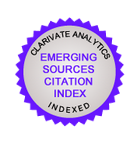Molecular-genetic characterization of halotolerant strain Priestia megaterium BIM B-1314D
https://doi.org/10.29235/1561-8323-2022-66-1-55-64
Abstract
Priestia megaterium BIM В‑1314D is a halotolerant strain able to adapt to osmotic stress. The analysis of a full nucleotide sequence of bacterium P. megaterium BIM В‑1314D has revealed that the genome of the studied strain is represented by one circular chromosome and nine plasmids, deposited in the database of GenBank NCBI under the registration number CP058262–CP058271. The size of the bacterial genome constitutes 5 984 922 base pairs with an average GC content of 37.7 %. The genome contains 6 187 genes where 5 978 were annotated as protein-enconding, 92 – as pseudogenes, 154 – as tRNA genes, 8 – as ncRNA, 47 – as rRNA. The genes responsible for synthesis and transport of betaine and proline osmolytes and transport of potassium ions ensuring the adaptation of strain P. megaterium BIM В‑1314D to osmotic stress were local-ized in the genome. Gene loci were defined encoding production of metabolites involved in the synthesis of phytohormones and polyamines accounting for the growth-promoting microbial ability. Gene clusters determining the synthesis of secondary metabolites, cold and heat shock proteins were revealed in the genome. The genome analysis of strain P. megaterium BIM В‑1314D provides the valuable data on the bacterial culture for stimulation of the plant growth in the salinized conditions.
About the Authors
N. I. NaumovichBelarus
Naumovich Nadezhda I. – Junior Researcher.
2, Kuprevich Str., 220141, Minsk
A. E. Akhremchuk
Belarus
Akhremchuk Artur E. – Researcher.
2, Kuprevich Str., 220141, Minsk
L. N. Valentovich
Belarus
Valentovich Leonid N. – Ph. D. (Biology), Associate Professor, Head of the Laboratory.
2, Kuprevich Str., 220141, Minsk
Z. M. Aleschenkov
Belarus
Aleschenkova Zinaida M. – D. Sc. (Biology), Chief Researcher.
2, Kuprevich Str., 220141, Minsk
I. N. Ananyeva
Belarus
Ananyeva Irina N. – Ph. D. (Biology), Associate Professor, Head of the Laboratory.
2, Kuprevich Str., 220141, Minsk
G. V. Safronova
Belarus
Safronova Galina V. – Ph. D. (Biology), Associate Professor, Leading Researcher.
2, Kuprevich Str., 220141, Minsk
References
1. Kosheleva N. E., Kuzminskaya N. Yu., Terskaya E. V. Salinization and solonetzization of urban soils due to the use of deicing agents (by the example of the Western administrative district of Moscow). Inzhenernye izyskaniya [Engineering survey], 2017, no. 6–7, pp. 64–77 (in Russian).
2. Gunde-Cimerman N., Plemenitas A., Oren A. Strategies of adaptation of microorganisms of the three domains of life to high salt concentrations. FEMS Microbiology Reviews, 2018, vol. 42, no. 3, pp. 353–375. https://doi.org/10.1093/femsre/fuy009
3. Grover M., Ali Sk. Z., Sandhya V., Rasul A., Venkateswarlu B. Role of microorganisms in adaptation of agriculture crops to abiotic stresses. World Journal of Microbiology and Biotechnology, 2011, vol. 27, no. 5, pp. 1231–1240. https://doi.org/10.1007/s11274-010-0572-7
4. Maniatis T., Fritsch E., Sambrook G. Molecular cloning: A Laboratory Manual. Cold Spring Harbor Laboratory Press, 1982. 2230 р.
5. Holtmann G., Bakker E. P., Uozumi N., Bremer E. KtrAB and KtrCD: two K+ uptake systems in Bacillus subtilis and their role in adaptation to hypertonicity. Journal of Bacteriology, 2003, vol. 185, no. 4, pp. 1289–1298. https://doi.org/10.1128/jb.185.4.1289-1298.2003
6. Nau-Wagner G., Opper D., Rolbetzki A., Boch J., Kempf B., Hoffmann T., Bremer E. Genetic control of osmoadaptive glycine betaine synthesis in Bacillus subtilis through the choline-sensing and glycine betaine – responsive GbsR repressor. Journal of Bacteriology, 2012, vol. 194, no. 10. pp. 2703–2714. https://doi.org/10.1128/jb.06642-11
7. Hoffmann T., Wensing A., Brosius M., Steil L., Völker U., Bremer E. Osmotic control of opuA expression in Bacillus subtilis and its modulation in response to intracellular glycine betaine and proline pools. Journal of Bacteriology, 2013, vol. 195, no. 3, pp. 510–522. https://doi.org/10.1128/jb.01505-12
8. Brill J., Hoffmann T., Bleisteiner M., Bremer E. Osmotically controlled synthesis of the compatible solute proline is critical for cellular defense of Bacillus subtilis against high osmolarity. Journal of Bacteriology, 2011, vol. 193, no. 19, pp. 5335–5346. https://doi.org/10.1128/jb.05490-11
9. Nascimentoa F. X., Hernándezb A. G., Glick B. R., Rossi M. J. Plant growth-promoting activities and genomic analysis of the stress-resistant Bacillus megaterium STB1, a bacterium of agricultural and biotechnological interest. Biotechnology Reports, 2020, vol. 25, art. e00406. https://doi.org/10.1016/j.btre.2019.e00406
10. Heinemann U., Roske Y. Cold-Shock Domains – Abundance, Structure, Properties, and Nucleic-Acid Binding. Cancers, 2021, vol. 13, no. 2, art. 190. https://doi.org/10.3390/cancers13020190
11. Wang B., Zhang D., Chu S., Zhi Y., Liu X., Zhou P. Genomic Analysis of Bacillus megaterium NCT-2 Reveals its Genetic Basis for the Bioremediation of Secondary Salinization Soil. International Journal of Genomics, 2020, vol. 2020, pp. 1–11. https://doi.org/10.1155/2020/4109186
12. Shao J., Li Sh., Zhang N., Cui X., Zhou X., Zhang G., Shen Q., Zhang R. Analysis and cloning of the synthetic pathway of the phytohormone indole-3-acetic acid in the plant-beneficial Bacillus amyloliquefaciens SQR9. Microbial Cell Factories, 2015, vol. 14, art. 130. https://doi.org/10.1186/s12934-015-0323-4
13. Zhou C., Ma Z., Zhu L., Xiao X., Xie Y., Zhu J., Wang J. Rhizobacterial strain Bacillus megaterium BOFC15 induces cellular polyamine changes that improve plant growth and drought resistance. International Journal of Molecular Sciences, 2016, vol. 17, no. 6, art. 976. https://doi.org/10.3390/ijms17060976













































